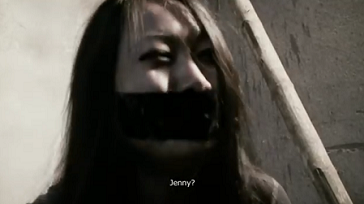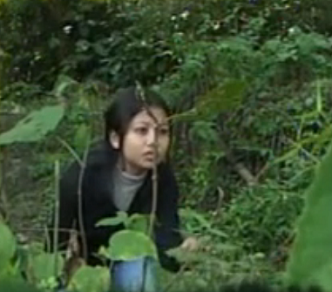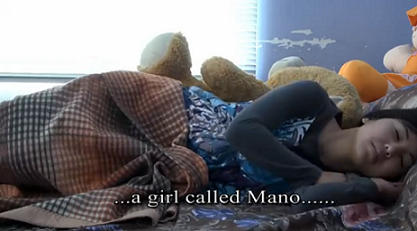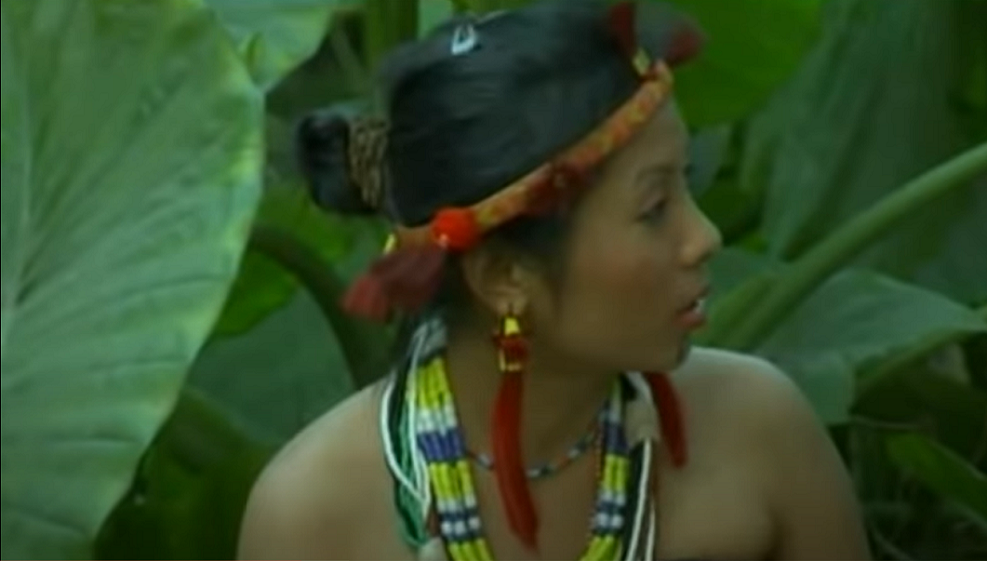Nagaland: Cinema
This page is called ‘Nagaland: Cinema,’ rather than ‘Nagamese cinema’--though its focus is mainly on Nagamese cinema--in order to accommodate Naga films in other languages as well.
The only resources on Nagamese cinema are the excellent Facebook |
Contents |
Sources include
NagameseMovie and
Nagamese, the language
The people of Nagaland belong to different tribes and speak around 20 languages that can be clubbed into sixteen linguistic groups. That’s right, these are languages, not dialects. Each language is different from the other. Therefore, the Nagas either talk to each other in English—which the majority of Nagas know—or in Nagamese,
A nascent film industry
Unlike Assam, Manipur and even Mizoram, Nagaland does not have a major film industry, partly because it does not have much of an audience for locally made films. One reason for this is that the people of Nagaland are divided into around sixteen linguistic groups—with Nagamese, a modern hybrid language, stepping in as a link language.
Nagamese belongs to no one. For the Nagas Nagamese is a link language, not a language to do any literary work in.An Ao will compose songs in the Ao language. The Tetseo Sisters, who are the state’s most successful pop group, sing in Chokri.
Songs don’t cost a fortune to compose; films do. You can write songs for a small audience. But no Naga language has enough speakers to sustain a film industry.
Therefore, most educated Nagas:
i) do not believe that Nagamese is a language fit for literature or any serious communication, including cinema (but that their own mother tongue and/ or English are).
ii) have never seen a film made in Nagaland. Very few educated Nagas can name an actor or director working in Nagaland’s films.
iii) make fun of the few films that have been made in Nagaland. They say, ‘We only watch Nagamese films to make fun of them.’ When "O Suko Pani Kile Giri Ase" was released in Nov 2008 at Hotel Saramati, Dimapur, some speakers at the premiere urged Nagas to acclaim the efforts put in by the pioneers instead of making fun of them.
iv) feel that the existing crop of films made in Nagaland are ‘insulting the Naga name,’ as Nagaland's main filmmaker Ajay Kumar Mehara has often been told about his films. Mehara told Morung Express that he has even received threats asking him to stop making films.
Kohima does not have a single cinema hall, though there used to be Ruby in the 1960s and '70s.
Against this background, as Morung Express points out, ‘One man’s dream keeps alive the Nagamese film industry.’ (The Nagaland film industry, actually, because he has made films in other Naga languages, too.) That man is Ajay Kumar Mehara, about whom more later on this page.
Two kinds of films
Two kinds of films are being made in Nagaland.
One the one hand there are full-length feature films, patterned on the commercial Hindi-Urdu films of the 1970s and 1980s. They have songs shot in autumnal forests of the kind popularised by Yash Chopra; the hero comes running into the screen from the left, the heroine from the right and they meet in the middle. The hero lifts up the heroine and does a circle, as the camera circles around them.
The songs, too, are shot like 1970s Hindi-Urdu film songs were.
These films have leading ladies like the glamorous Rose Longchar, and leading men like Neangs and Akash.
Such films are shot in cheerful colours and are melodramatic.
The second stream of films from Nagaland is more gritty and realistic (eg The Debt, Ground Zero). These films cater to more educated audiences, are subtitled in English, are likely to have English titles, might even be in the English language, deal with Westernised characters and focus on realistic action and realistic tales of love.
They are shot in low-light conditions and are influenced by South Korea, the West and 21st century Mumbai films.
However, the second category of films are shorts of 20-24 minutes, and not full-length. These are serious (but not art) films that the Naga elites cannot laugh at.
The films
Cinema for the masses
O Suko Pani Kile Giri Ase
(2008) film director, Akash
Poisa Pora Moram Dangor
Prod: Naga Film Institute
Itu Jiwan
Producer & Director : Anok Pongen
Stars: Rose (Asola), Lipok, Jacob, Atula, T.Siose & Kumar B.K
Khushi Din
(2012)
Director & Producer Anok Pongen
Stars: Zokhoi , Akash Atae Konyak, Hanji, Dilip Kujur and Neangs Conerr
Dukh
An action film.
Producer and hero: Nengba of Dimapur
Mon Tu Jole
A love triangle with Rose Longchar in a vampish negative role, which she excelled in.
Heartbeats
The film’s makers claim that this film was Nagaland's first ever professionally made feature film from NorthEast.
Produced by Nagaland Film Division.
Directed by Nikki Shaan
Journalist
w, d: Akash Atae Konyak;
Produced by Shiyeli
Alternate Naga Cinema
True Love Will Wait
30 mts
Language: English
Prod Highland Dawn Media
Written by internationally acclaimed Naga writer Easterine Kire Angami
Directed by Bryan Rose
This elegant film is about Nagaland’s English-speaking upper middle class, some of which is consumerist, some responsible and some swept away by modern mores. Shot amidst sumptuous, eye-catching sets it deals with issues of modern teenage life.
The Debt
Producers: Naga Headhunters
Written and directed by Liyo Kikon
This polished 20 minute feature film is about Christopher, who is kidnapped by an unknown bad man who insists that Christopher owes him a debt. The film is well photographed and has a tight script. Its look and feel is very professional. The film can be seen with subtitles on The Debt/ YouTube.
Ground Zero
Ground Zero/ You Tube with English subtitles Producers: Central Store Group/ Youngster Entertainment
Dir: Imdong Ajem
Script: Impukhtoba [blurred credit title]
24 minutes.
This short feature film is about rival gangs fighting for turf.
The Bamboo Boys
30 minutes
Language: Hindi-Urdu
Screenplay, script, direction: Raaghav Dar
Producer: Going to School
Executive producers: Gargey Trivedi and Jyoti Somani
The Bamboo Boys was made in Hindi-Urdu rather than any language spoken in Nagaland. It was made entirely by non-Nagas. However, all the principal actors were Naga. And, as Limasen' Senti Longkumer informs us, this short feature was shot entirely in Khonoma Village, Kohima, Nagaland.
The film is entirely sympathetic to the Nagas and Nagaland. There is nothing paternal about it. As Japfiio Kayina and Lastorino commented, it did justice to the beautiful landscapes of Nagaland.
The film encourages young people to embrace entrepreneurship as a model for sustainable living, and does so though a dialogue from within and not imposed from outside Nagaland.
However, by making the film in a language not understood widely in the villages of Nagaland, the film lost some of the very audience that it seeks to address, as can be seen from the reactions on Youtube.
Chunthailiu Gonmei and Japfiio Kayina reflected the general sentiment that the film was nice but it Would be nicer if there were subtitles. (Indpaedia feels that dubbing into Nagamese would reach the target audience even more effectively.) Apparently Jamir who plays the father was instrumental in helping other actors speak the language as he is a Hindi teacher in a school.
Van kik reflected the opinion of all those who commented on the film by calling it ‘a Naga film.’ Indeed, he called it ‘a wonderful Naga film.’
English-language films, the emerging trend
Big Time Buddies (2012?)
Written & Directed by Arenla M. Subong
An urban film about educated young Naga professionals who live in well-appointed houses and are articulate. When one of them is found to be HIV+, the buddies provide understanding and solidarity.
Lichaba's Daughter (2017?)
Written & Directed by Arenla M. Subong
For the Ao community Lichaba is the creator of the universe. His daughter, Tsungrosenla, is abducted by Meja, an Ao commoner, who marries her. Her friends (shown in the picture) decide to look her up.
The film is a musical
Enter My World (2020)
67 minutes
Director: Arenla Subong
Abiogenesis Films
Music: Abiogenesis
Writer: Arenla Subong
Camera : Tariq Ahmed, Harsha, Akum Subong, Manoj & Supong Al
Cast:
Arenla Subong : Atila
Kiry : Kiry
Moa Subong : Aka (Tigerman)
Meren Tzudir : Sholo
Marjo : Viholi
Enter My World has very good and crisp sound recording, very good stereophonic, Western-style background music, and lavish photography especially the night sequences that are so appropriately lit.
Two urban, well-educated Naga women stumble into a tribal village where warriors hunt the boars that ravage their crops and a middle-aged man has the spirit of a tiger within him. A villager from a rival village has the spirit of a boar.
The film is loosely structured like a stage musical.






























